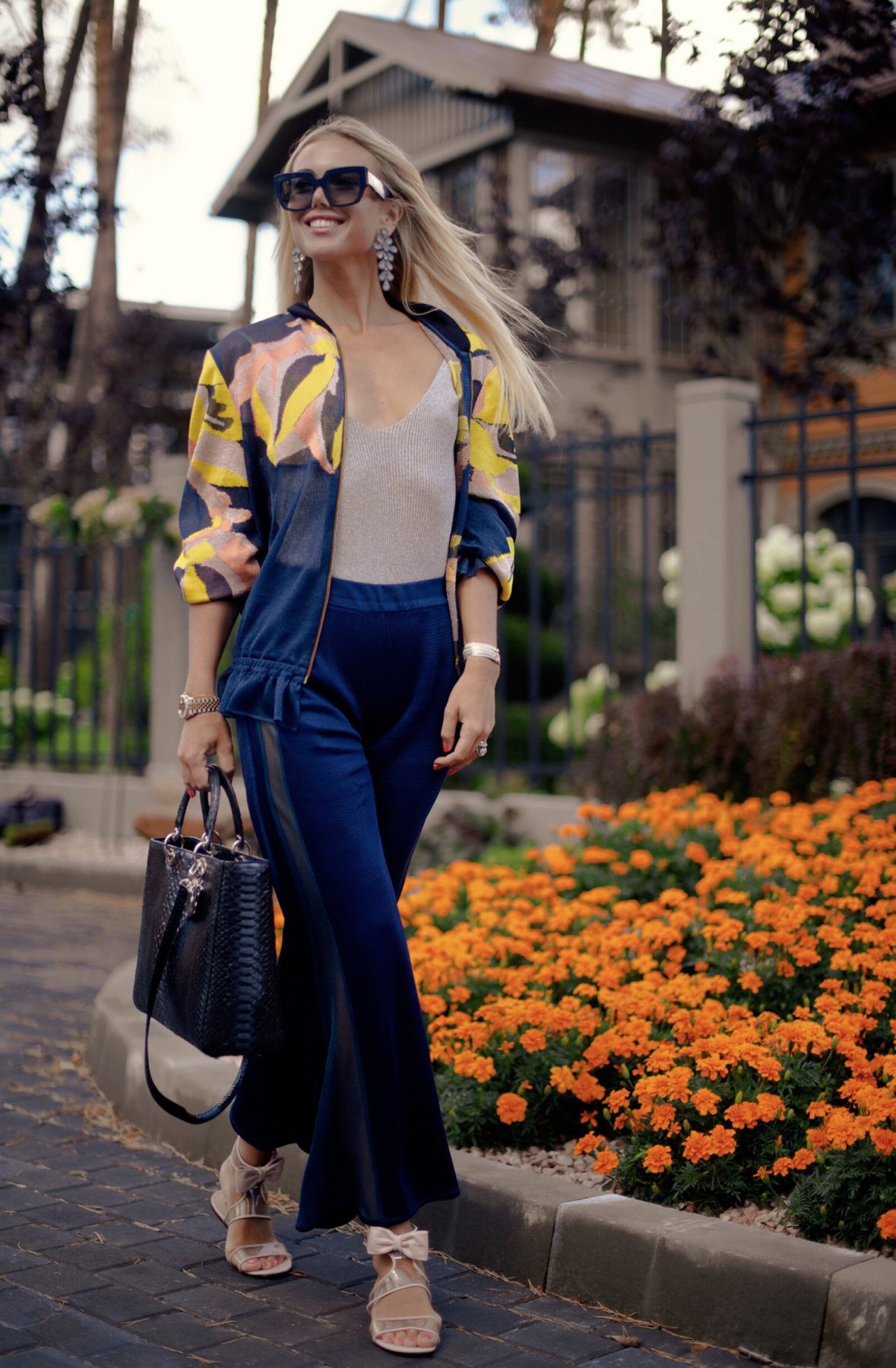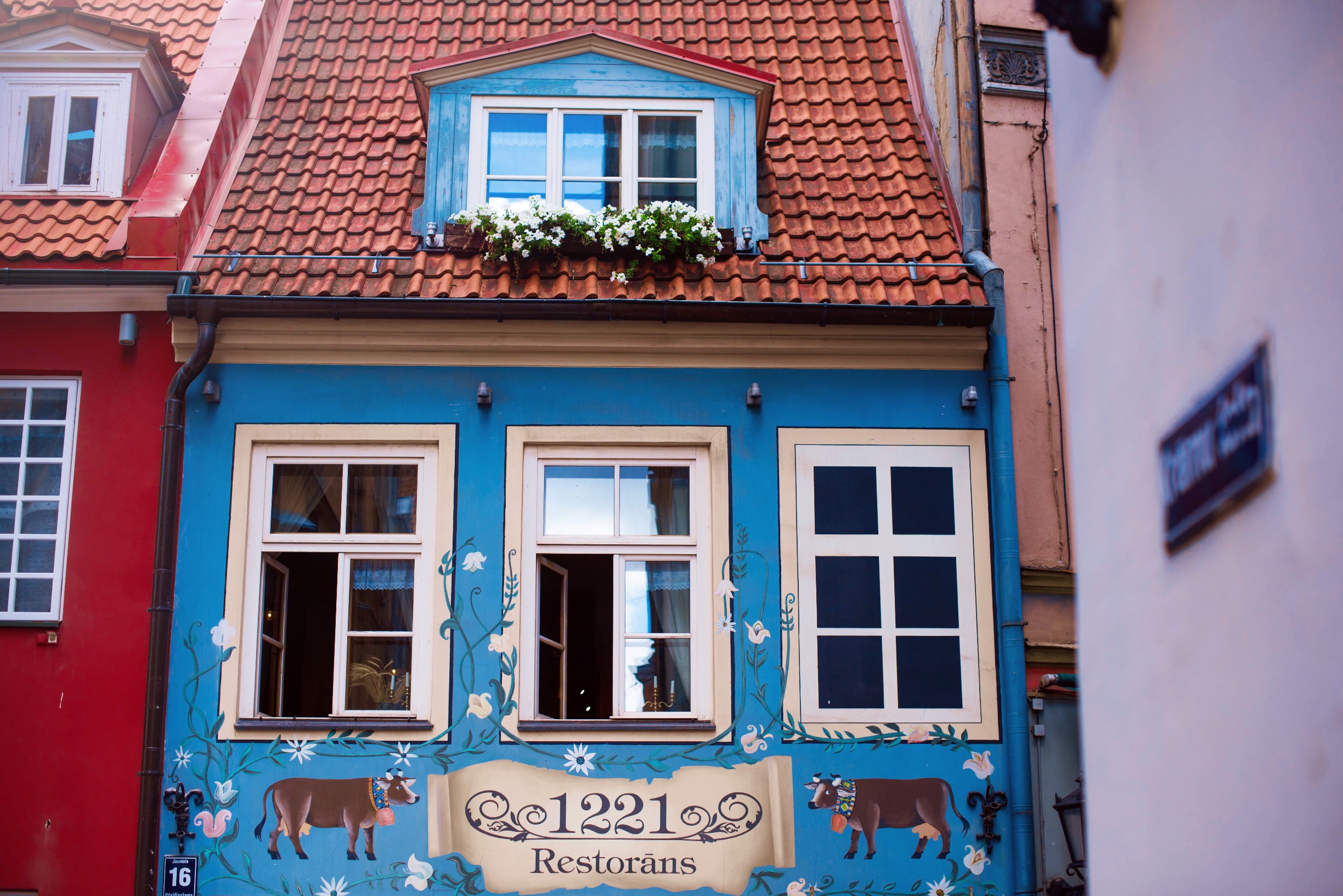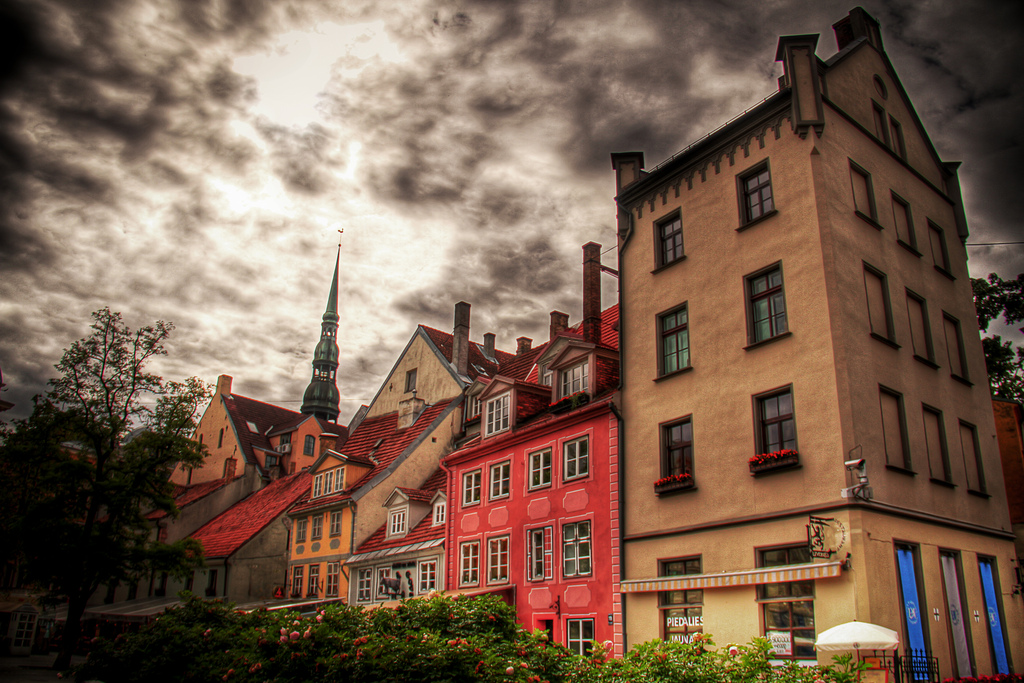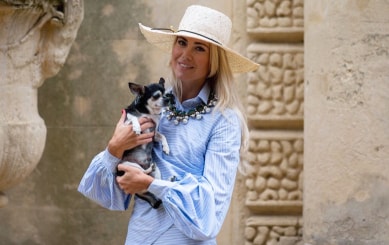Located on the crossroads between Western and Eastern cultures, and with a turbulent history, it is clear that many nations have left their footprint on Latvia, yet the country remains steeped in its own traditions. Today it is an enlivening combination of rich history and contemporary cool, and its capital, Riga, is quickly becoming a coveted destination, particularly for those with a passion for the arts.
 I’m wearing a tracksuit by Kukhareva London
I’m wearing a tracksuit by Kukhareva London
At its heart, Old Riga is recognised as a UNESCO World Heritage site, and few places evoke quite the same sense of magic. Expect towering spires, architectural masterpieces on every corner, quaint cobbled lanes and vibrant town squares that come alive in the warmer months.
For a shopping experience like no other head to Riga’s Central Market and sample some of the country’s finest culinary offerings. One of the largest markets in Europe, the space is packed full of cheeses, fish, smoked meats, honey, black bread and fresh produce, presented in a dazzling array of colour from pavilions that were once military airship hangars, repurposed in the 1920s. Its old warehouses or spikeri (from the German Spéicher), have been turned into a hip arts and entertainment quarter.

And the architectural ingenuity continues throughout Latvia’s capital. Riga experienced its golden age in the early 20th Century, just as Art Nouveau began to make waves, meaning the city is a haven for fans of the style. There are in fact over 800 Art Nouveau structures throughout, in a mesmerising display that represents one of the world’s richest collections. The most famous street is Alberta iela, built in 1901 by a single architect, Mikhail Eisenstein.
One of Riga’s oldest and most important buildings is the House of the Blackheads, a striking Gothic building with a Dutch Renaissance facade, it was used to house members of the merchants’ guild, who were also notorious revellers of their day. Some say European royalty would come from far and wide in disguise to attend the parties secretly.
Originally erected in 1905 and fresh from major reconstruction, the Latvian National Museum of Art is an imposing Neo-Classical structure formed of its original columns and sweeping staircases, blended seamlessly with new elements like an observation deck and light-filled glass cupola. Inside you will find a complete breakdown of Latvia’s artistic history.

Another spectacular Neo-Classical structure is the city’s famed Latvian National Opera and Ballet building dating from 1882. It’s well worth a visit to one of its many performances, or just to stroll around its beautiful grounds and gardens.
In the evening visitors can sample culinary delights from one of the capital’s unique and reasonably-priced bistros, try local beers in the brew pubs along the hipster strip Miera iela, or while away the hours in a cocktail bar where you’re bound to be offered the rather mysterious Riga Black Balsam, a potent herbal liqueur that’s sure to put a little pep in your step.
Written by Thea Carley



